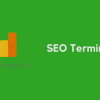
If you’re looking to build an e-commerce website then two of the most popular options available to you are the WooCommerce and Shopify platforms. Each has its strengths and weaknesses, though it’s up to you to decide which one best suits your needs.
In this piece, we’re going to take you through the pros and cons of each, and help make life a little easier when you choose what platform you would like to build your e-commerce store with.
First though, let’s get into each of the two platforms. We’re going to explain how they differ on a base level.
The basics of Shopify
The Shopify platform has become well-known for its aesthetically pleasing themes, based on around 54 templates, the majority of which you need to pay for — around ten are free. A total of 54 themes may sound limiting, but each of these is customisable.
Another great benefit of Shopify’s themes is that they’re all responsive. Being an e-commerce platform, Shopify has also made sure to make optimising for SEO as easy as possible.
If there’s a downside to Shopify, it’s that you’re kind of stuck with the theme you choose to go with. The platform does offer a theme editor, though any more complicated work will require the help of a web designer.
The basics of WooCommerce
WooCommerce is more of a plugin than it is a platform, but it’s purpose is the same as Shopify ~ to provide you — the website owner – with a place to build your e-commerce store. In terms of templates, WooCommerce doesn’t have any. It’s built to seamlessly integrate with your websites existing design.
In terms of design, the possibilities with WooCommerce are seemingly endless. You will, however, again need the assistance of web designer should you want to achieve a particular look or feel on your WooCommerce e-commerce store.
In saying that, WooCommerce has a serious advantage over Shopify when it comes to design. Yes, more coding may be required, though you’re far more likely to be able to achieve exactly the look and feel you like through the platform.
Pricing
Both platforms have different pricing options, however, we feel that this is quite insignificant when it comes to the big picture. There are free options for both, though, we’re also going to discuss the paid route (on a base level).
Overall, running a Shopify store incurs the following fees. $29/month for hosting ($348 per year) and $9 year for a $9+ per year for a top-level domain.
On the other hand, WooCommerce will cost you between $5 and $100 to host per month (this can be below $200/annually, realistically), $9+ per year for a top-level domain, and $100+ per year for an SSL certificate. You can also find free SSL certificates, though it’s best to go for something that’s secure i.e. Comodo if you’re hosting a serious online store.
What about what’s free?
Simply put, Shopify offers more free features than WooCommerce. Here’s what you will get from the very start:
- Unlimited products
- Unlimited file storage
- Automatic fraud analysis
- Embedded Oberlo integration
- Manual order creation
- Discount codes
- Blog module
- Free SSL certificate
- Mobile commerce optimization
- Editable HTML and CSS
- Credit card payments
- Multiple languages
- Adjustable shipping rates and taxes
- Customer profiles
- Drop shipping capabilities
- SEO-ready site structure
- Individual product reviews
- Facebook selling module
- Social media integration
- Physical and digital products in the store
- Unlimited traffic to your store
- Daily backups
- Site stats and product reports
- Advanced reports (on Shopify and Shopify Advanced plans)
- Fully featured mobile app
- Product importing via CSV files
- Different product variations
- Print orders
- Gift cards (on Shopify and Shopify Advanced plans)
- Abandoned cart recovery (on Shopify and Shopify Advanced plans)
On the other hand, when you get your brand new WooCommerce store setup, here’s what you’ll get:
- You can sell physical products, digital products (including software and apps)
- Payments via PayPal and Stripe built-in
- Adjustable shipping rates and taxes
- Unlimited number of products and product categories
- Stock levels control
- Mobile-friendly structure
- You have complete control over your data
- Works with your current WordPress theme
- Hundreds of plugins (extensions) available
- A free Facebook ad and Facebook stores extension
Looking at the above, Shopify may be better suited to you if you’re looking to drive success through a lean start-up method. Where WooCommerce excels though, is through the extensions the platform has on offer. This includes areas such as selling external i.e. via Facebook, ramping up your email marketing efforts and even tracking user behaviour. That’s not to say that Shopify hasn’t been catching up in this department, though.
Ease of use
When it comes to day-to-day use, both platforms are relatively the same. Uploading products etc. is a fairly simple process across Shopify and WooCommerce.
When it comes to setting up the platform’s themselves though, Shopify is definitely easier to work with, as all you need to do is the Shopify website, sign up, and follow the steps.
With a WooCommerce store, you will need to purchase a domain name, setup your own website hosting, have your website designed using the WordPress platform, and then you can install the WooCommerce and begin configuring your online store.
What’s better for SEO?
WooCommerce is undeniably ahead of Shopify when it comes to optimising for search engines, though the latter does do a great job of helping you out with the basics. Also, the code on Shopify is quite clean, and the website structure of a Shopify store usually lends itself to SEO.
Having said that, WooCommerce stays ahead of Shopify when it comes to the SEO game, as you can make use of plugins such as Yoast SEO in conjunction with the e-commerce platform. As such, you’re able to stay in control of every little SEO detail.
So, what’s better for you?
Over the long term, we’re going to have to side with WooCommerce, mainly because you can do a lot more with the platform in terms of customisation. Though, if you’re looking to build up your e-commerce store at the lowest possible cost then Shopify will definitely help you out there in the beginning, as there’s a lot more free features available from the get-go.









